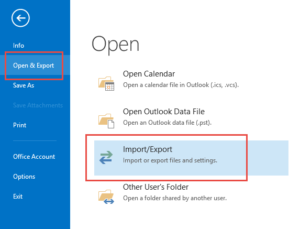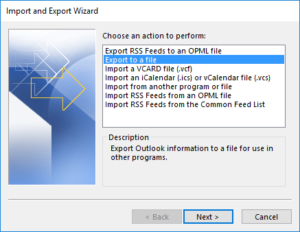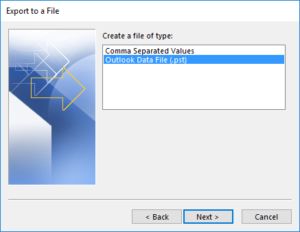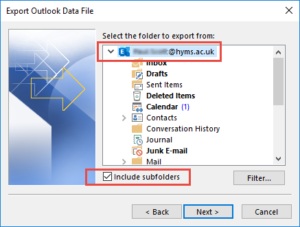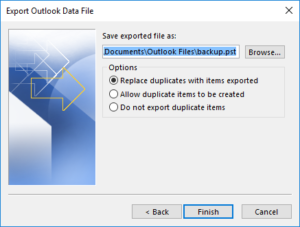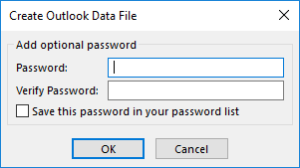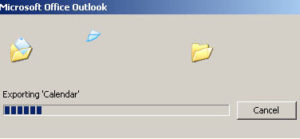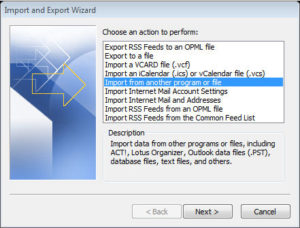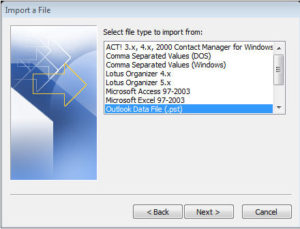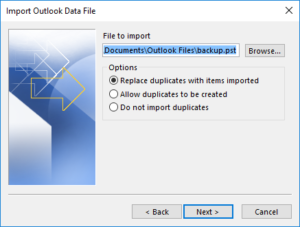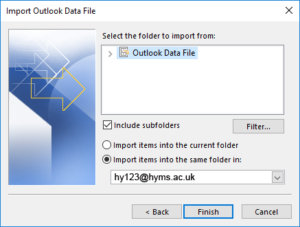When graduating or leaving Hull York Medical School, you can take a copy of your emails before you leave by following the instructions below.
On campus, Staff and students have access to Outlook through a HYMS desktop on both York and Hull university computers.
If you have not logged on to Outlook on a computer previously, you will need to enter your username in the format hy123@hyms.ac.uk.
Off campus, anyone who has access to Outlook can connect to their HYMS mailbox using Outlook by following the instructions for setting up your email account from home. You can then step through the instructions below to take a copy of important emails.
Backing up your email using Outlook (Method 1)
Double click the Outlook icon on your desktop. Log on with hy123@hyms.ac.uk credentials.
From your inbox click on File | Open & Export | Import/Export
The Import and Export Wizard will open. Under Choose an action to perform: select Export to a file and click Next
On the Export to a file page select Outlook Data File (.pst) and click Next
Select the top most folder titled hy123@.ac.uk. Place a tick next to Include subfolders and then click Next
If you don’t want to backup your entire mailbox then just select the folder you would like to backup, for example Contacts and then click Next when ready.
Select where you would like to save the backup file. By default, your backup will be saved to the following location: C:\Users\your_username\Documents\Outlook Files\backup.pst. To change this click on the Browse… button and navigate to where you would like to save the file.
Under Options select Replace duplicates with items exported.
Click Finish when ready
You can specify a password for your backup in the Create Outlook Data File window if you wish.
Outlook will then begin the process of backing up your mailbox to the file you specified. This may take several minutes.
When complete you can navigate to the specified location that you saved the file to. When you have found the file you can copy this to your personal storage device such as a usb pen drive to take away with you. Please make sure that your storage device has enough empty space available as email backups can be quite large depending on the size of an individual’s mailbox.
Once you have taken a copy of your emails and have them stored in a .pst file as described above, you will be able to access these emails by importing this file into another installation of Outlook (some other emai clients also support import of Outlook .pst files).
Save the export .pst file to a location on your computer.
If required, follow the links for instructions on creating a new profile in Outlook. If for example you are using Outlook in a new workplace then you will need to find out the appropriate server information etc. for your environment in order to connect your profile to an account.
Log into the new profile and then go to File | Open | Import
Select Import from another program or file and click Next
On the Import a file page select Outlook Data File (.pst) and click Next
On the Import Outlook Data File page, click the Browse… button, locate your backup file and then double click the file. Ensure that Replace duplicates with items imported is selected and then click Next
Select the top level folder (or whichever folders you want to import) and ensure that there is a tick next to Include subfolders.
Select Import items into the same folder in:
Select the appropriate folder from the drop down menu that you want your emails to be imported into and click Finish.
Your University mails will then be imported into your personal Outlook account. This may take several minutes depending on the number of emails that were backed up.
Backing up emails to personal account (Method 2)
Before you lave the university, you can back up any important emails by copying them to a personal account using Microsoft Outlook, which is part of the Microsoft Office 365 package.
To copy your emails, please follow the steps below:
- Open up Microsoft Outlook on your personal computer.
- Add your university email account (hyabc@hyms.ac.uk) onto the Outlook app – for help with adding accounts onto Outlook, please read this support page. Please wait until all of your university emails have been downloaded to the Outlook app.
- Follow the same steps as above to add your personal Outlook/Hotmail email account to the app (if you don’t have a personal Outlook/Hotmail email address, you can create a free account at https://signup.live.com)
- Create a folder on your personal email account that you can copy your university emails into – you can call it “HYMS email backup”, or anything else you prefer. For help with creating folders on Outlook, please read this support page.
- On the Outlook app, go to your university email account, right-click on any folder that you need to back up (e.g. Inbox, Sent Items etc.) and select the Copy Folder
- You will then be asked where you want to copy the folder to – select the HYMS email backup folder that you created on your personal email account.
- Repeat the above process for any other folders or individual emails that you want to copy over.
There is no limit to the amount of emails or folders that you can copy, but the process may take a while to complete depending on how many emails need to be copied over. Please leave the Outlook app open until the copying process has fully completed – once it has finished, your university emails will be safely stored on your personal account.

